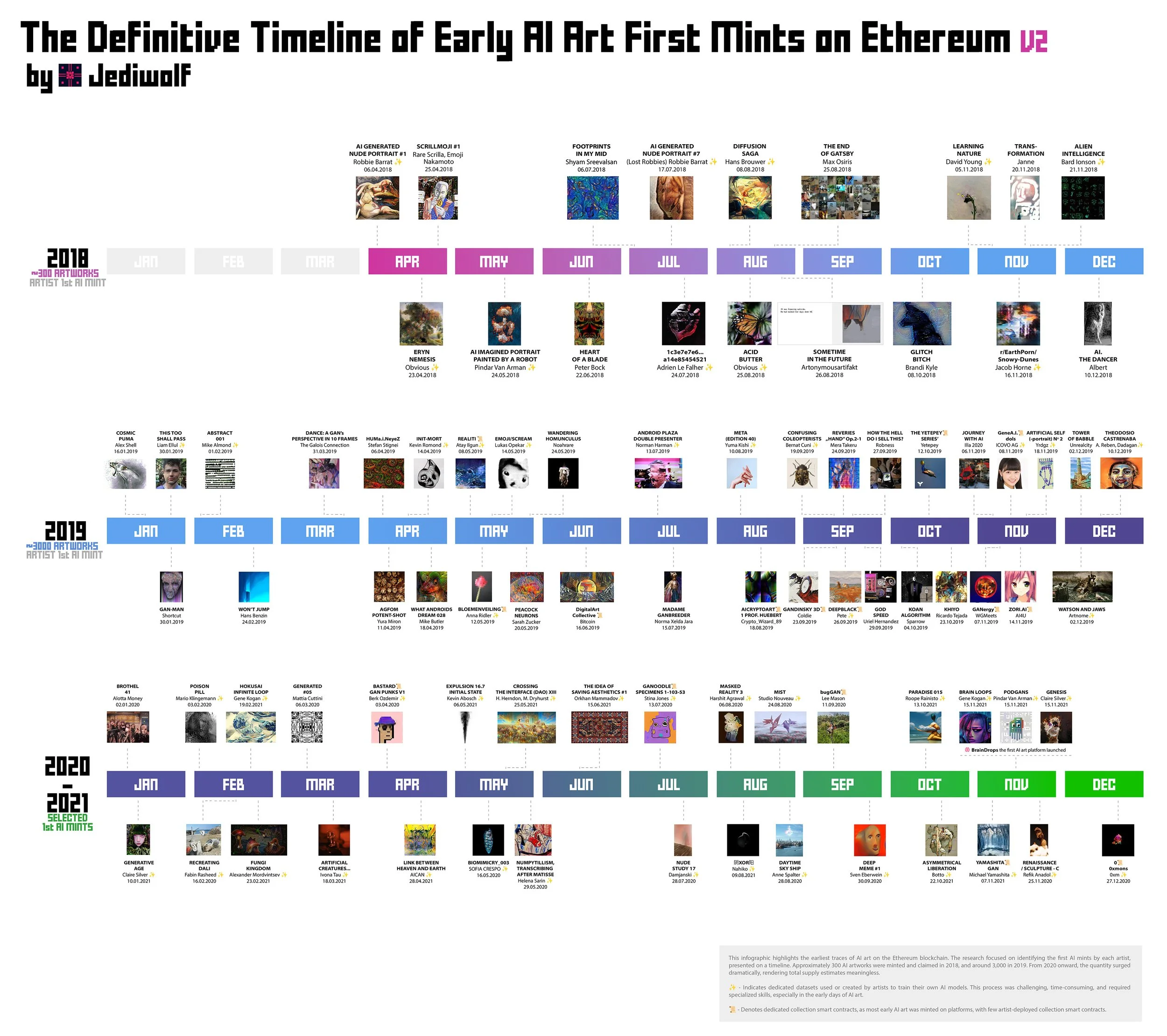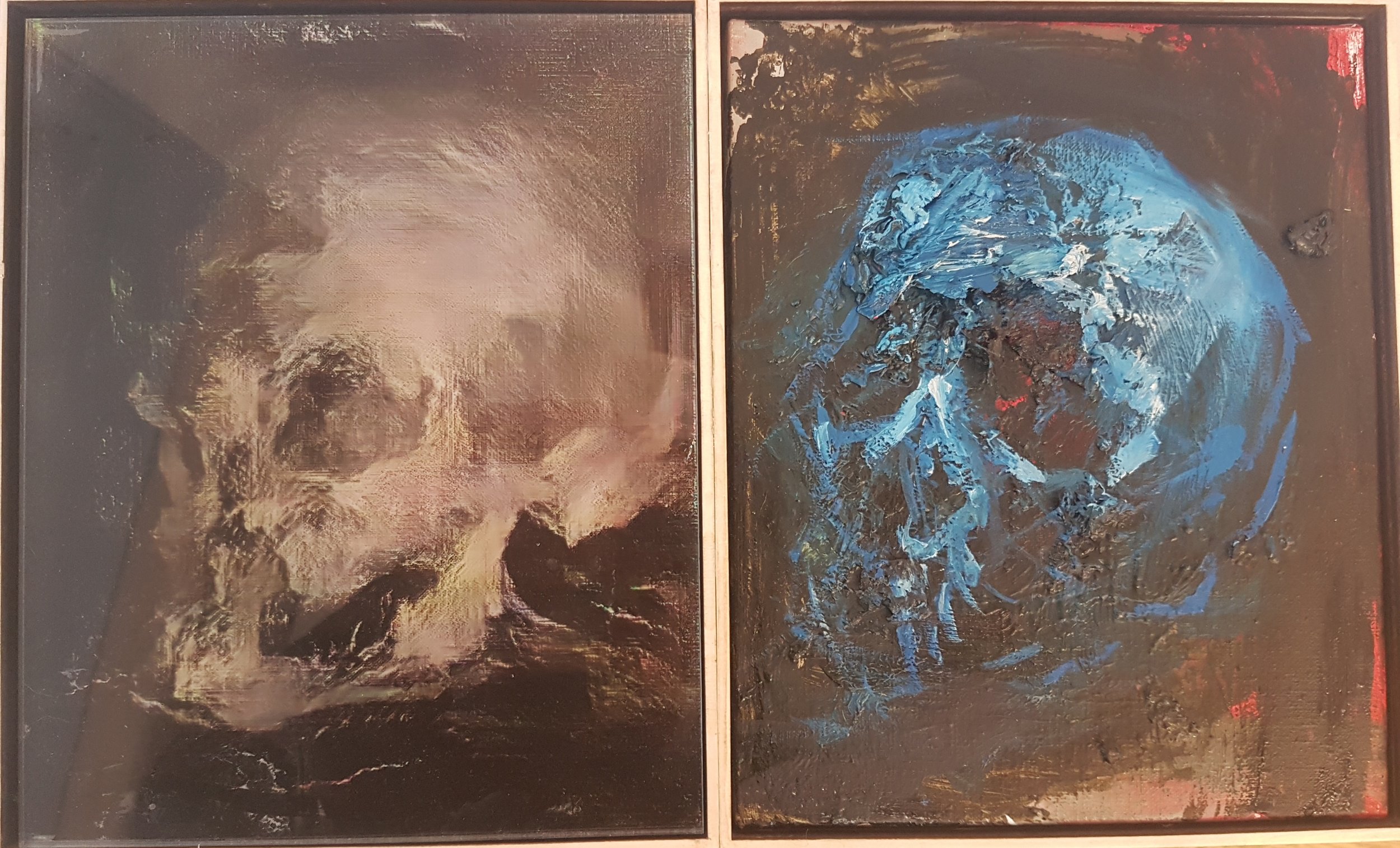The Interview I Art Collector Jediwolf
Truly great collectors don't just aim to make money; they strive to live with major masterpieces, discover the work, and integrate it into their life experiences. The role of the art collector has always been crucial; without them, the art world wouldn't function, and artists wouldn't survive. Even the most impressive art museums owe much of their grandeur to donations from individual collectors.
Through a series of interviews, Kate Vass seeks to understand the perspectives of a new generation of collectors, the relationships they build with artists, and what drives the formation of their collections.
In this discussion, Kate Vass had the privilege to interview Jediwolf, a collector with a vision and dedication to collecting digital art on-chain. Jediwolf has significantly contributed to the provenance of early GANs creations. In a relatively short period, he has built an impressive UnderTheGAN collection, which focuses on early AI artworks verified by their tokenized nature. His influence in the digital art space is notable, particularly for his passion for the artist XCopy and his role in the formation of one of the most successful DAOs, The Doomed DAO.
We are fortunate to be the first to interview Jediwolf, who typically prefers to remain anonymous. Jediwolf describes his early love for art and his journey into collecting digital pieces, as his collection aims to honor the pioneers of AI art, emphasizing the critical need to understand and preserve the origins and evolution of this art form within the digital and blockchain realms. We hope you enjoy the conversation as much as we did.
KV: What's your earliest memory of art, and what led you to start collecting?
JW: I've been a collector since an early age. As a teenager, I acquired my first oil paintings online. They weren't expensive, but I adored them. Marine art resonated with me the most, and paintings by artists such as J.M.W. Turner and Ivan Aivazovsky were, and still are, breathtaking to me. Although I couldn't afford to buy their works, they were my first true love in the world of art.
Ivan Aivazovsky, The Sea. Koktebel, 1853
KV: What constitutes “art”? What makes a work of art – “art” from your perspective?
JW: You know, art and its perception is totally a personal thing. It's like... imagine you've got this secret, beautiful tune playing in your head when you look at something. The louder that song plays, the more the art hits home. It's tough to put into words, but I think it just clicks on a subconscious level. Everyone has their own 'song', I believe.
KV: How did you acquire the very first piece in your collection?
JW: My collection mainly consists of @XCOPYART art (overeXposed collection) and early AI art (UnderTheGAN collection). The first XCOPY piece in my collection was 'Taxmen' 2019, 20/20 KO edition, acquired in May 2022.
KV: How would you describe yourself as an art collector?
JW: I see myself as a curator-collector and researcher. I'm learning to trust my intuition, especially when it comes to collecting, and not just following the crowd. It's fine to follow others when it helps you discover new things and learn, but if you're doing it just for speculation, there's a good chance it won't work out. After all, the art market is incredibly tough to speculate in.
KV: What defines your collecting style?
JW: I would describe my collecting style as 'counter-intuitive’. Generally, I prefer to buy works that resonate with me but aren't yet in the spotlight. For example, I started collecting XCopy early editions in 2022 (after the NFT bubble burst, and I was the only 'big' buyer for quite a long time) and early AI art in 2023 (probably spending the largest amount of funds in this genre as an individual collector), both of which weren't obvious choices for most participants in the blockchain-based art space.
KV: Have your reasons for collecting art evolved over time?
JW: Again, this motivation is hard to explain as, for me, it works on a subconscious level. When I see a piece that resonates with me and fits my collection, it becomes a bit of an obsession. It's something built into me, and I don't think it will ever change. However, curating my own collections, improving them, and supporting others gives me a lot of joy, and it's a somewhat new experience. The Doomed DAO is also a cool example of a mutual initiative where we collect XCOPY art as a group of over 120 people. I was one of the founding members.
KV: Describe your collection in three words.
Built with love.
KV: Is there a common theme or element that unites all the works in your collection?
JW: For my UnderTheGAN collection, I've focused specifically on 'early' AI art, created a few years before Midjourney and Stable Diffusion were released and before this 'genre' exploded beyond imagination. There are absolutely fantastic artists and pioneers who were training their own advanced AI models (2014-2019), putting lots of heart and soul into the process when no one really knew 'AI art' was even possible. I can see and feel it in each of these works.
KV: Do you have relevant education in tech or art? Do you pursue other hobbies or collect other things, and if so, why?
JW: For all my professional life, I've been in tech, and it probably made it a bit easier for me to understand tokenized/blockchain-based art faster than many other trad art collectors out there. I believe that eventually, we will reach a mass adoption where digital / blockchain-based art will be as 'normal' as trad art in the average person's perception. I would even say that youth will enter the art world through digital art, so I expect a major shift here. The reasons are quite obvious, I believe.
KV: What aspect of collecting do you enjoy the most?
JW: Probably the chasing aspect. Once I discover a work I really like, I do the research and conclude that it's something I really want to possess. The chasing part that comes next is definitely the most exciting. The acquisition journey (which can be very long, if it happens at all) brings emotions that will stay with me forever
KV: Can you share a funny/sad story or a “the one that almost got away” story from your collecting experience?
JW: One of the most emotional moments for me was acquiring 'Last Selfie' in 2022. I had been pursuing it for months (with no success), as it was the most coveted XCOPY artwork in my eyes and resonated with me deeply. Then, out of the blue, it was listed at an unimaginable price for a 10/10 edition: 200 ETH (around $700k today). My hands were shaking as I prepared and transferred the funds. An hour later, I discovered it was the very first minted edition of 'Last Selfie' (#1). The joy I felt was indescribable, and even now, that joy remains.
KV: Could you tell us more about your UnderTheGAN collection? Do you plan something additional with your collection?
JW: UnderTheGAN isn't just a collection; it's my personal AI art research project, recently brought to life within the early AI art timeline on Ethereum.
Today, AI art has surpassed all our predictions and continues to evolve at a breathtaking pace. But for me, what's truly crucial is understanding its origins - tracing back to where it all began. A small group of AI art pioneers, including Robbie Barrat, Mario Klingemann, David Young, Gene Kogan, Bard Ionson, Pindar Van Arman, Memo Akten, Mike Tyka, Alexander Mordvintsev (and others) were the true godfathers of the AI art revolution we're witnessing today. My mission is to share the knowledge I've accumulated through my research, shining a light on these foundational figures and their groundbreaking work.
The Definitive Timeline of Early AI Art on ETH V1, courtesy of Jediwolf (https://x.com/randomcdog/status/1798340316967116897)
KV: What is the most recent piece of art you added to your collection and why?
JW: My most recent acquisition is 'Cats' by Alex Mordvintsev, the creator of DeepDream. This piece was generated in May 2015, predating the July 2015 open-source release of DeepDream's code. It took nine years to secure Google's permission for Alex to 'release' this artwork, and I'm immensely proud to be its owner.
'Cats' is unique in my collection as a "retroactive mint" - generated in 2015 but only minted in 2024. I typically avoid retroactively minted artworks unless they meet two crucial criteria: historical significance (such as being among the first DeepDream works ever generated) and strong provenance. In this case, both boxes are checked.
KV: Has digitalization/blockchain changed the way you collect? Can you imagine collecting AI art without blockchain or NFTs?
JW: Yes, I must say I became very spoiled as a collector. The fact that you can trace the artwork from its inception, have 100% guaranteed authenticity, and can trade globally (and instantly) without any third-party risks takes a lot of burden off collectors' shoulders. It's hard to keep buying art IRL when blockchain is an alternative. So, I'd rather avoid it at this point, with some exceptions, of course. IYKYK
Robbie Barrat & Ronan Barrot, Infinite Skulls, 2019 ( Jediwolf’s the UnderTheGAN Collection )
KV: What or who has influenced you as a collector? Are there any collectors you admire or watch out for?
JW: Yes, there are many wonderful collectors whom I admire. If one is interested in early AI art, I recommend Zaphodok, Batsoupyum, WangXiang, Hackatao, 6529, TokenAngels, Coldie, Artonymousartifakt, Colborn and MOCA collections. For XCOPY - Liquid (@l1qu1d_), ModeratsArt, Cozomo, Krybharat and many others. What I appreciate most is their ability not only to appreciate art but also to have the conviction and guts to hold onto it through both good and bad times. All the individuals I've mentioned are remarkable collectors, and some of them are artists as well, which I find absolutely amazing.
KV: What has been your experience with the elitism associated with the art market, particularly in the realm of digital art? Do you believe the market for ‘grails’ is already well-developed?
JW: I must say it's quite well-developed. Many think NFTs are 'dead'. However, when you want to acquire a truly desired work such as a 'Lost Robbie' or one of XCOPY's top editions or 1/1s, you will have to pay Substantially, and there is no chance someone will 'dump it'. Also, the 'grail' buzzword is heavily overused. The number of artworks I personally perceive as grails is tiny and limited to only a few 'names' in the blockchain-based art space today.
KV: Where do you see the future of the digital art market heading?
JW: I believe the digital art market will eventually dwarf the traditional art market. However, this transformation won't happen overnight - it could take years, perhaps even more… The digital art space has its own masters and pioneers, figures who are pushing boundaries and redefining artistic expression. It's perfectly natural that it will take time for the broader world to recognize and appreciate their contributions.
KV: What are your top three pieces of advice for new collectors?
JW: Develop your own opinions. Aim to acquire pieces that are so rare and desirable that once you sell them, the opportunity to repurchase them is almost nonexistent. Acquire what you love and what is truly hard to obtain.
KV: What are your top three pieces of advice for artists?
JW: Sell only what you are proud of. Treat collectors as your ambassadors - there is a great power beneath each artwork held by an engaged collector. Be a collector of your own works.
***
Jediwolf on X: @randomcdog
Collection on Superrare: https://superrare.com/jediwolf
UnderTheGAN Collection: https://opensea.io/UnderTheGAN








